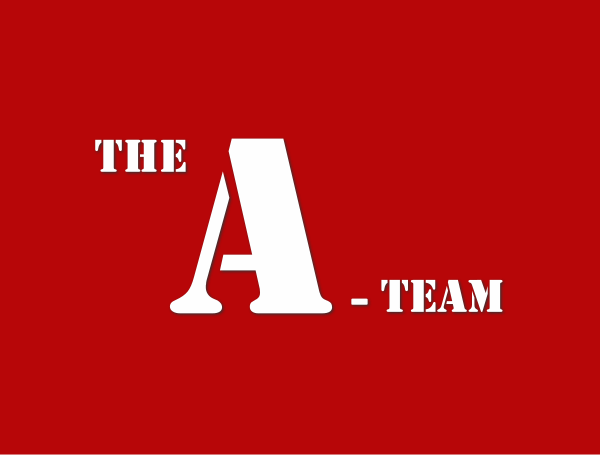Culture is one of the major issues with KM implementation, as we have discussed regularly on this blog. A recent book, edited by Dana Tessier, throws new light on this topic, as discussed below.
The book is entitled "Organizational Culture Strategies for Effective Knowledge Management and Performance" and
can be ordered here. Use the code IGI50 at checkout for a 50% discount.
I discussed the book with Dana, and our discussion is below. My questions are in bold.
Hello Dana; tell me about yourself, and how you came to edit this book?

"I am a KM practitioner with over 10 years experience with a master's degree in Library Science from McGill University where I specialized in knowledge management. I happened upon the field of KM somewhat accidentally and I became fascinated by it and have always looked for opportunities to contribute to the community by sharing lessons learned and best practices, and this book is no exception. I began working on the book in the summer of 2020 and so while I was researching and preparing my proposal, the world was still reckoning with the Covid-19 pandemic and organizations were having to figure out how to operate in a rapidly changing environment. Many organizations needed to move to a remote and distributed way of working to keep people safe and this was straining their ways of working, and I began to see a rising need for KM. So the work felt very relevant to the time, and was also inspired by my own understanding and processing of how organizations were changing and what we needed to do to adapt".
Why did you choose this particular topic?
"While studying KM and implementing it, I became fascinated at how processes and procedures would be successful in one organization, and then completely fail in another. I started researching why this was happening and that is when I noticed how big an impact organizational culture can have on a KM strategy and I wanted to do more research in this area. I found that often organizational culture is one chapter within a book about KM, and for this book, I wanted organizational culture to be the through line".
Tell me about the people you involved, and why you chose them?
"The authors are academics and KM practitioners from around the world with experience in different industries like technology, engineering, manufacturing, finance, and more. They were able to include stories about government agencies, public and private companies, as well as from small, emergent teams to large, complex organizations. It was important to me to include a variety of voices and experiences so that we could look at the problem from different angles and develop a broad and deep understanding of potential solutions. Just to mention a few of the authors; Colin Furness - a professor at the University of Toronto - authored two chapters, one with Anindita Bose, and one with Dr. Chun Wei Choo. Ian Fry has over 50 years of IT experience spanning many different sectors and organizations, and his chapter on lessons learned included several real-world examples from his work. Leland Holmquest is currently the Communications and Change Management Lead at Microsoft, and I met while presenting on the same panel at KM World in 2016. Leland wrote a chapter on Motivation. Kathleen Cauley & Kristy Popwell are my team members at Shopify and they authored a chapter about our experience replacing our internal wiki. Both are accomplished KM practitioners who hold Master's degrees in Information Studies from McGill University".
What new things came out from the book? What did you learn from the contents about KM culture, that you did not know before?
"Organizational culture is the through line of this book, and each chapter looks at knowledge management strategies and best practices through the lens of organizational culture. While there are different ways to observe culture, one that stands out to me is celebration. What an organization chooses to celebrate, and how they celebrate can provide some great insight into their culture and what they value. A great way to integrate knowledge management into a culture will be by celebrating its activities and outcomes.
"Also Leaders are incredibly important when working with organizational culture because employees will look to them for what behaviours they model, and they can easily reinforce behaviour change by what they reward. Renée López-Richer and Caroline Thompson wrote a chapter about the Knowledge Leader as a multiplier by leveraging findings from Liz Wiseman's book The Multipliers. This chapter provides some great insight for how leaders can effectively engage in knowledge management, and how they can encourage their teams' mindsets and behaviours which will be critical to influence the existing culture of the organization.
"Also Rick Nucci and Steve Maynerick shared several best practices for creating a knowledge-driven culture in their chapter and this included several real-world examples from some great organizations. What I found especially helpful in this chapter is that it includes a maturity model so that organizations can understand where they are currently sitting and identify some critical next steps so they can continue their journey. While shifting cultures can be difficult, by identifying the current state and an appropriate next step, organizations are more likely to make a successful transition".
Were there common themes in the chapters?
"Once I received all the chapters, I actually completely re-organized my plan for the order of the chapters and organized them into people, process, or technology. Without trying, I found that naturally the authors' findings were fitting into one of these categories. In the People section, the chapters focus on personal motivation, trust, leadership, and other interpersonal behaviours and structures to promote successful knowledge management. In the Process section, the chapters focus on methodologies for both implementing knowledge management strategies, as well as facilitating ongoing knowledge transfer and use. For the Technology section, these chapters focus different methodologies and tools, and the book ends with a case study about Shopify's lessons learned from rebuilding their company-wide wiki and is a great example of bringing together the different learnings from each section as they used the people, process, technology model as a way to set up their project team for success".
What sort of consensus can you derive for the book about the best way to address cultural issues in KM?
"The first most important thing is not to ignore organizational culture. I know a lot of leaders who want to move fast and in the face of all the disruption we are experiencing right now, they need to move fast. But you cannot ignore culture forever - it will catch up with you and impact your results one way or another. It is difficult to change culture and it takes time, and so understanding how to work with the existing culture, and make nudges to it over time is a great strategy unless there is a lot of executive and top level support for a bigger change strategy. Next, it is very important for the people impacted by the strategy to understand what is in it for them, and ideally, the tasks and activities being requested of them should help make them more successful within their role. Once people feel that sharing and using knowledge is critical to their success within the organization, they can hopefully be leveraged to solve other cultural issues as they come up".
Who would you recommend this book for?
"This book will benefit KM practitioners, business leaders, educators, and students. KM practitioners will be better equipped to build and implement KM strategies that effectively navigate culture and are more successful as a result. Business leaders will learn about the benefits of learning organizations and the different elements needed to deliver their intended outcomes. Educators will benefit from a rich discussion of knowledge management practices that includes real-world examples, and ultimately that will benefit students learning about knowledge management. This book furthers critical research on how organizations can thrive and adapt due to emerging global disruptions, and this will benefit the fields of information science, knowledge management, and business".
Thank you Dana



























